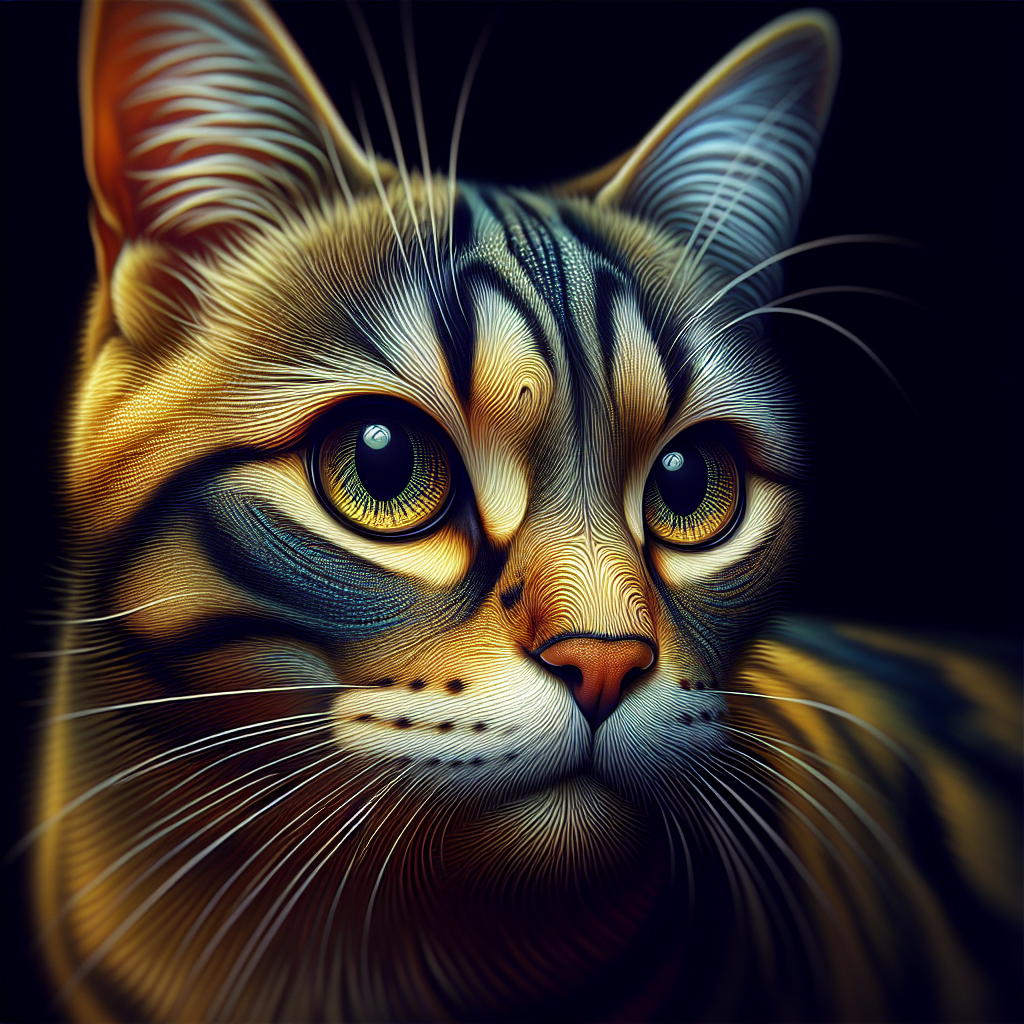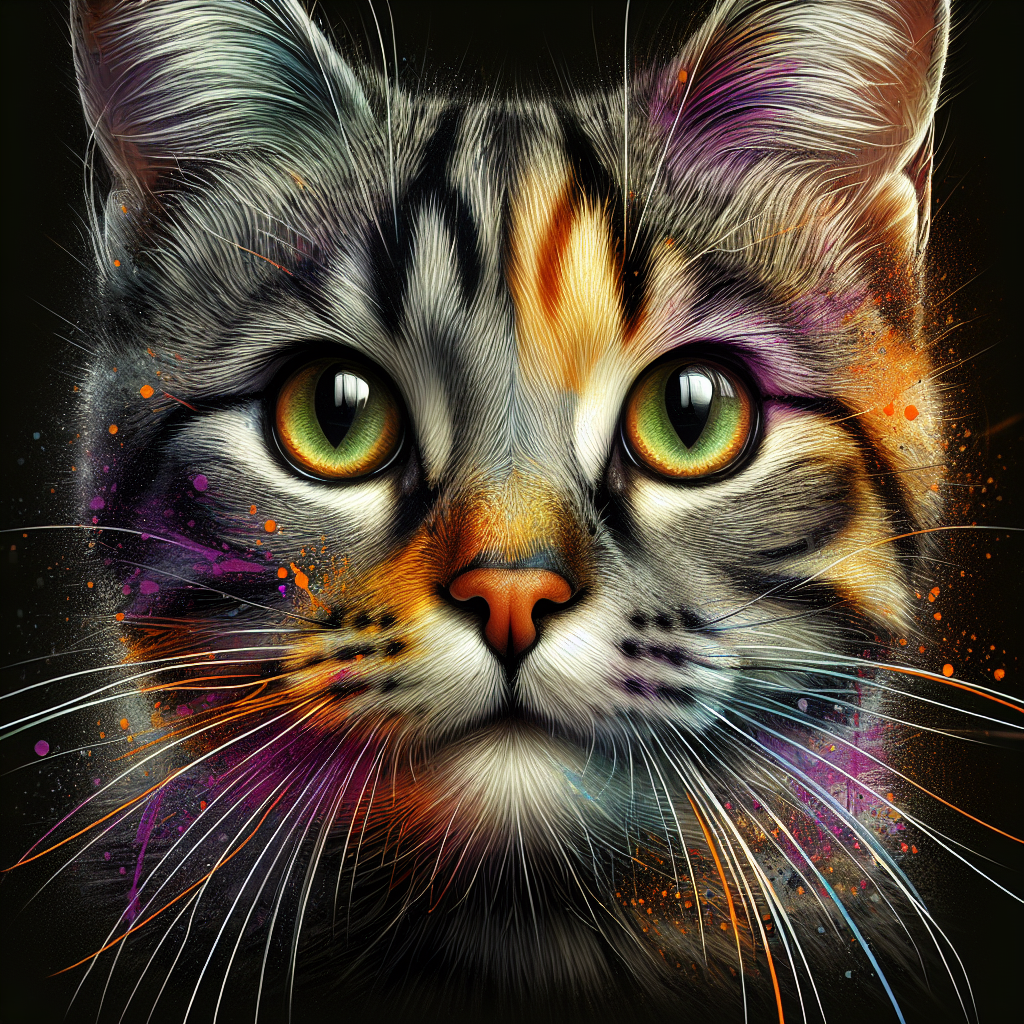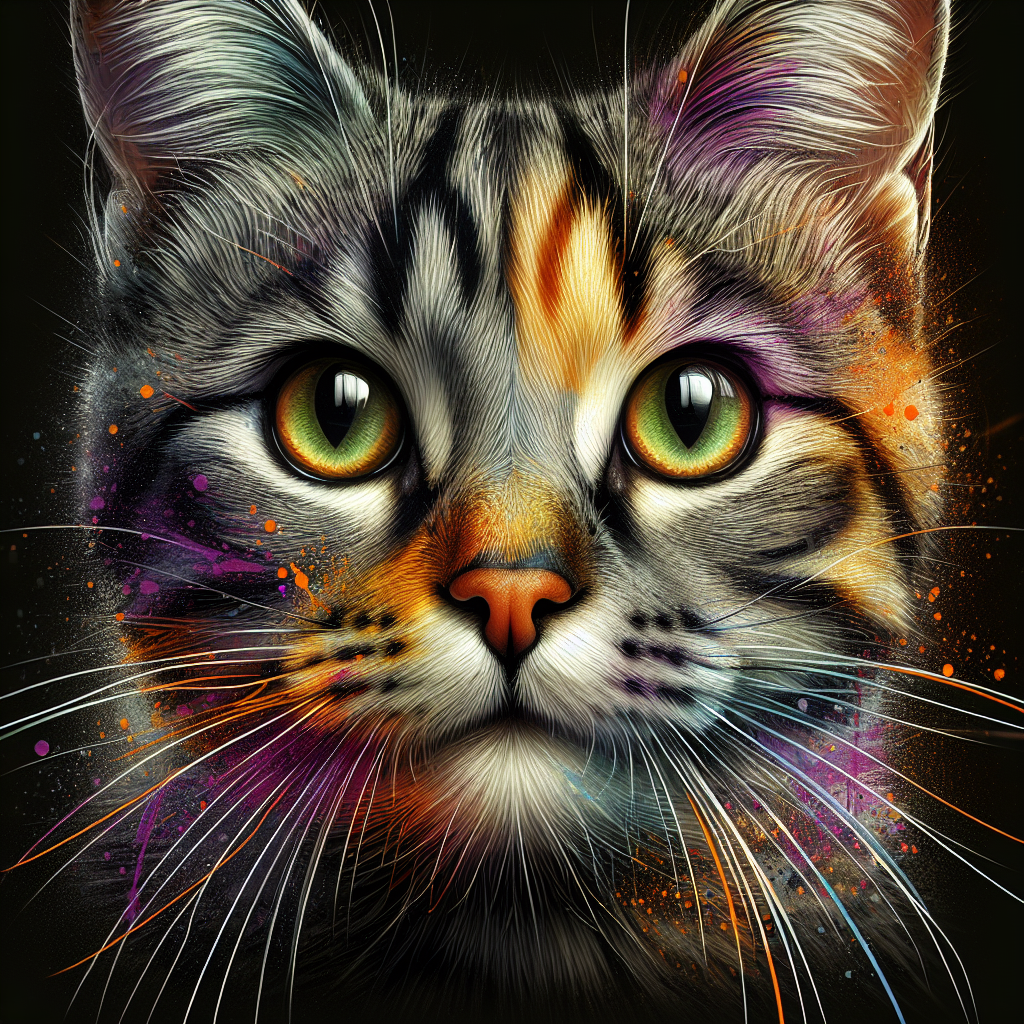Have you ever wondered why most tabby cats are female? In the world of feline genetics, there seems to be a curious pattern where male tabby cats are a rarity. This article explores the fascinating science behind this phenomenon, shedding light on the genetic factors that contribute to the predominance of female tabby cats. So, prepare for a delightful journey into the realm of tabby cats and uncover the secrets behind their gender distribution.
The Genetics behind Tabby Cats
What is a tabby cat?
Tabby cats are one of the most recognizable and beloved feline companions. Known for their characteristic coat patterns, tabbies exhibit a variety of colors and markings that set them apart from other cats. Whether it’s the classic “M” marking on their foreheads or a beautiful blend of stripes and spots, tabbies never fail to capture our attention. But have you ever wondered what causes these striking coat patterns? The answer lies in the world of genetics.
The role of genetics in determining coat patterns
Just like humans, cats inherit their physical traits through genetics. The unique combination of genes inherited from their parents determines everything from their color to their coat patterns. Each cat possesses a set of genes that determine the pigmentation and patterning of their fur, and it is the interaction between these genes that gives rise to the distinctive coat patterns seen in tabbies.
The X chromosome and coat color determination
To understand the genetics behind tabby cats, we must first delve into the world of sex chromosomes. In cats, as in humans, there are two sex chromosomes: X and Y. Female cats have two X chromosomes (XX), while male cats have one X and one Y chromosome (XY). Interestingly, the X chromosome plays a crucial role in determining coat color in cats.
Genetic factors leading to more female tabbies
Now that we understand the basics of genetics and coat color inheritance, let’s explore why most tabby cats tend to be female. This phenomenon can be attributed to the unique arrangement of coat color genes on the X chromosome. Unlike the Y chromosome, which is relatively gene-poor, the X chromosome carries a multitude of genes that influence coat color and patterning.
Feline Coat Colors and Patterns
Understanding coat color inheritance
Coat color inheritance in cats follows a complex set of rules governed by genetics. The interplay between different coat color genes can result in a wide range of possibilities, from solid colors to intricate patterns. It is these combinations of genes that ultimately determine the coat color and patterning we observe in tabby cats.
Different coat patterns in felines
Tabby cats showcase a diverse range of coat patterns, each with its unique charm. The classic tabby pattern, also known as the blotched tabby, consists of bold, swirling blotches or stripes on the cat’s body. Other common patterns include the mackerel tabby, characterized by narrow, parallel stripes, and the spotted tabby, which features discrete spots instead of stripes. Additionally, there are variations and combinations of these patterns, adding further beauty and individuality to tabby cats.
Common coat colors and patterns in tabbies
Tabby cats are not limited to a single coat color or pattern. In fact, there is a plethora of options when it comes to their appearance. Common coat colors seen in tabbies include brown, gray, silver, and red. These colors are often combined with the classic tabby pattern, creating a stunning display of contrasting hues and patterns on the cat’s fur. However, it is worth noting that coat colors and patterns may vary depending on the specific combination of genes inherited by the cat.

The Calico Cat Conundrum
The unique case of calico cats
Calico cats, also known as tortoiseshell cats, present a fascinating anomaly within the feline world. These cats exhibit a mosaic of black, orange, and white patches on their fur, creating a stunning visual display. However, what makes calico cats truly remarkable is the fact that most of them are female.
How calico cats are formed
The coat color gene responsible for the black and orange patches in calico cats is known as the O gene. The O gene is located on the X chromosome, and its expression determines whether a cat will have black or orange fur. Female calico cats possess two X chromosomes, and therefore, two copies of the O gene. As a result, they can exhibit both black and orange patches on their fur. In contrast, male calico cats are extremely rare because they would require two X chromosomes, which is highly unusual.
The connection between calico cats and tabbies
Interestingly, the connection between calico cats and tabbies lies in the fact that many calico cats also exhibit tabby patterns. This combination creates a captivating display of colors and patterns. Tabby calico cats can have a mixture of black and orange patches adorned with the classic tabby pattern, enhancing the uniqueness of their appearance.
The predominance of female calico and tortoiseshell cats
The overwhelmingly female population of calico and tortoiseshell cats is a direct result of the genetics involved in coat color determination. Since the O gene is located on the X chromosome, male calico cats would require a rare genetic anomaly, such as possessing an extra X chromosome. Consequently, the vast majority of calico and tortoiseshell cats are female, with the occasional rare male calico cat making headlines around the world.
The Sex Chromosomes in Cats
The X and Y chromosomes
In the world of genetics, sex determination is closely tied to the presence of specific sex chromosomes. Cats, like humans, have two sex chromosomes, known as the X and Y chromosomes. Females possess two X chromosomes (XX), while males possess one X and one Y chromosome (XY). The unique combination of these chromosomes plays a vital role in determining the cat’s sex as well as influencing other genetic traits.
Sex determination in cats
Unlike humans, where the presence of the Y chromosome determines maleness, cats have a different mechanism for sex determination. In cats, it is the presence or absence of the particular gene on the Y chromosome that determines maleness. If a cat possesses the SRY (sex-determining region Y) gene on its Y chromosome, it will develop as a male. Without this gene, the cat will develop as a female.
The role of sex chromosomes in coat color
While sex chromosomes primarily determine the cat’s sex, they also have an intriguing influence on coat color. As previously mentioned, the X chromosome carries an array of genes involved in coat color determination. The gene responsible for black or orange fur, the O gene, is just one example of the genetic influence of sex chromosomes on the cat’s appearance.
The influence of X chromosome inactivation
In female cats with two X chromosomes, a fascinating process known as X chromosome inactivation occurs to ensure the proper functioning of genes. In the early stages of development, one of the X chromosomes becomes inactivated in each cell. This process prevents an overexpression of genes carried on the X chromosome. However, some genes, including those responsible for coat color, can escape inactivation, resulting in the patchwork appearance seen in calico and tortoiseshell cats.

The X Chromosome and Tabby Cats
The distribution of coat color genes on the X chromosome
As we explore the genetics behind tabby cats, it becomes clear that the X chromosome plays a significant role in determining coat color and patterning. Multiple genes responsible for coat color inheritance are located on the X chromosome. These genes include the O gene, responsible for black or orange fur, and the T gene, responsible for the tabby pattern. The distribution of these genes on the X chromosome contributes to the enchanting variety of coat colors and patterns observed in tabbies.
The orange gene (O gene) and its location on the X chromosome
The orange gene, also known as the O gene, is a crucial factor in determining whether a cat will have black or orange fur. This gene is located on the X chromosome and has two variants, one responsible for black fur (O) and the other for orange fur (o). The combination of these variants, along with other genes, gives rise to the wide range of coat colors seen in tabbies.
The tabby gene (T gene) and its relationship to coat patterning
The tabby gene, or T gene, is another important player in the world of feline coat patterns. This gene determines whether a cat will exhibit the tabby pattern or not. Cats with at least one copy of the T gene will have some form of tabby patterning, while cats without the T gene will have solid-colored fur. The interaction between the T gene and other coat color genes on the X chromosome contributes to the unique coat patterns seen in tabbies.
How the combination of O and T genes affects coat color
The combination of the O and T genes on the X chromosome leads to a fascinating array of coat color and pattern possibilities in tabby cats. Cats with two copies of the O gene (OO) will exhibit black fur, while cats with one or two copies of the o gene (Oo or oo) will have orange fur. When combined with the T gene, different coat patterns can emerge, such as the classic tabby pattern, the mackerel tabby pattern, or the spotted tabby pattern. The intricate dance between these genes contributes to the charming diversity in the appearance of tabby cats.
Genetic Imprinting and Tabby Cats
The concept of genetic imprinting
One intriguing aspect of genetics, known as genetic imprinting, adds an additional layer of complexity to the inheritance of coat color in tabby cats. Genetic imprinting refers to the phenomenon where certain genes are expressed differently depending on whether they are inherited from the mother or the father. This process can have profound effects on coat color inheritance and leads to further variations in tabby cats’ appearances.
Genomic imprinting and coat color inheritance
Genomic imprinting affects coat color inheritance in tabby cats by altering the expression of certain genes inherited from each parent. Specifically, the H19 gene, located on the X chromosome, plays a crucial role in determining coat color through genomic imprinting. The expression of the H19 gene depends on its parental origin, and this, in turn, influences the expression of other genes involved in coat color.
The H19 gene and its link to feline coat color
The H19 gene is associated with genomic imprinting and feline coat color inheritance. Its expression is influenced by whether it is inherited from the mother or the father. This gene interacts with other coat color genes, including those responsible for the tabby pattern, to determine the final appearance of tabby cats. The intricate interplay between the H19 gene and other genetic factors contributes to the captivating variety of coat colors and patterns seen in tabbies.
The impact of genetic imprinting on gender distribution in tabbies
Genetic imprinting not only influences the inheritance of coat color but also plays a role in the gender distribution of tabbies. The specific genetic mechanisms involved in coat color inheritance and genomic imprinting, combined with X chromosome inactivation, can contribute to a statistical bias towards female tabby cats. While further research is needed to fully understand this phenomenon, it highlights the intricate web of genetics that shapes the feline world.
The Rarity of Male Tabby Cats
The statistical gender bias in tabby cats
Observant cat lovers may have noticed something peculiar about tabby cats – a skewed gender ratio. While tabbies can be found in both males and females, it is not uncommon to notice a higher prevalence of female tabbies. This gender bias in tabbies has intrigued scientists and cat enthusiasts alike, leading to investigations into the factors contributing to this phenomenon.
Factors influencing the scarcity of male tabbies
The rarity of male tabby cats can be attributed to various factors, including the genetic and hormonal influences involved in coat color determination. As we explored earlier, the O gene and T gene, responsible for coat color and patterning, are located on the X chromosome. Since male cats have only one X chromosome, the interplay between these genes differs from that of their female counterparts.
The role of sex-linked genetic factors
Sex-linked genetic factors play a significant role in the rarity of male tabby cats. The distinct genetic makeup of male cats, with only one X chromosome, limits the potential combinations of coat color and patterning genes. This, coupled with the intricate interplay between the O and T genes, contributes to the decreased presence of male tabbies compared to females.
Natural selection and male tabby rarity
While genetics largely influence the scarcity of male tabbies, natural selection may also play a role in this phenomenon. Male tabby cats, being the less common gender within the tabby population, may face different environmental pressures compared to their female counterparts. Factors such as mating opportunities, competition, or survival advantages may contribute to the overall distribution of male tabbies in the feline world.
Environmental Factors and Tabby Cat Gender
The influence of environment on coat color expression
While genetics play a central role in determining coat color and patterning, environmental factors also exert an influence on how these traits are expressed. Environmental cues, such as temperature, nutrition, or even stress, can potentially impact the final appearance of a cat’s coat. However, the extent to which these factors affect the male to female tabby ratio remains an area of ongoing research.
Epigenetic modifications and coat color
Beyond genetic factors, epigenetic modifications can influence how genes are expressed and can be influenced by environmental factors. Epigenetic marks, such as DNA methylation or histone modifications, can potentially alter gene expression patterns related to coat color. These modifications may contribute to the development of specific coat color patterns or influence the male to female tabby ratio through interactions with genetic and environmental factors.
The potential impact of environmental factors on the male to female tabby ratio
While the specific influence of environmental factors on the male to female tabby ratio requires further investigation, it is plausible that such factors could contribute to the observed statistical bias. Environmental cues during critical periods of development, such as prenatal or early postnatal stages, may influence the expression of genes involved in coat color determination, potentially resulting in a higher prevalence of female tabbies. However, the extent of this impact and the specific mechanisms involved remain areas of ongoing research.
Ethical Considerations
Breeding practices and their effect on tabby cat gender
Breeding practices have a significant impact on the distribution and prevalence of specific coat colors and patterns within tabby cat populations. Selective breeding for certain traits, including coat colors or patterns favored by breed standards or consumer preferences, can inadvertently contribute to the male to female tabby ratio. It is essential for breeders and cat enthusiasts to consider the potential consequences of their breeding choices and strive towards maintaining genetic diversity within tabby cat populations.
Selective breeding for specific coat colors
Selective breeding for specific coat colors can lead to unintended consequences, including the skewing of the male to female tabby ratio. By prioritizing certain coat colors or patterns, breeders may inadvertently limit the gene pool and decrease the prevalence of specific traits in certain genders. Maintaining a diverse range of coat colors and patterns within tabby cat populations is essential for the health and well-being of the breed as a whole.
Ensuring genetic diversity in tabby cat populations
Maintaining genetic diversity within tabby cat populations is crucial to preserve the health and resilience of the breed. Genetic diversity allows for a broader range of adaptability and reduces the risk of inherited health issues. Breeders, cat owners, and organizations should consider the importance of genetic diversity and aim to make informed decisions that promote a balanced representation of coat colors and patterns in both male and female tabby cats.
Addressing the potential consequences of gender imbalance
The potential consequences of gender imbalance in tabby cat populations should not be overlooked. Skewed gender ratios can lead to reduced genetic diversity, increased susceptibility to certain health issues, and disruptions in the overall stability of the breed. By considering the broader implications of breeding practices and actively addressing gender imbalances, cat enthusiasts can contribute to the well-being and long-term viability of tabby cats as a distinctive and beloved feline variant.
Conclusion
In conclusion, the genetics behind tabby cats offer a fascinating journey into the complex world of coat color and pattern inheritance. Through an intricate combination of genes located on the X chromosome and influenced by various factors, tabbies display a diverse array of coat colors and patterns that captivate our hearts. The predominance of female tabbies can be attributed to a combination of genetic factors, including the distribution of coat color genes on the X chromosome, genetic imprinting, and sex-linked genetic influences. As we continue to unravel the mysteries of feline genetics and coat color inheritance, further research is necessary to fully understand and appreciate the intricacies of the tabby cat’s genetic makeup. By doing so, we ensure a brighter future for these beloved companions and deepen our understanding of the beautiful world of feline genetics.

